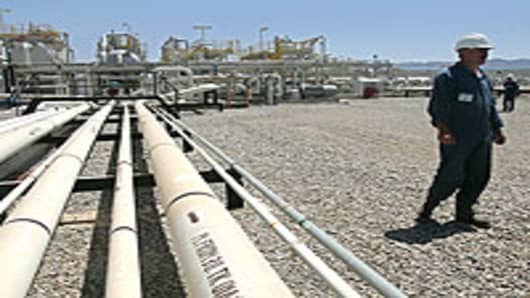Crude oil futures prices are down about 3 percent Thursday, after settling at $102.59 per barrel Wednesday, their highest level since May 31.
An agreement announced Wednesday between Enbridge Energy Management and Enterprise Products Partners to reverse the direction of crude oil flows from Cushing, Okla., to the U.S. Gulf Coast, which could provide an initial daily capacity of 150,000 barrels by the second quarter of 2012 and 400,000 barrels by early 2013.
Crude prices are up about 33 percent since they closed at a one-year low of $75.67 on Oct. 4, 2011.



